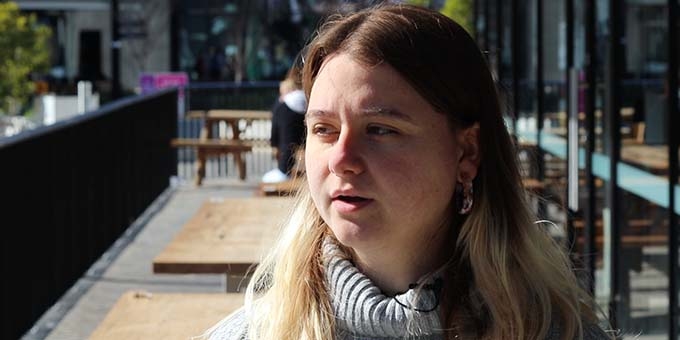Tegan Clark came up with the idea for the first Women in STEM leadership conference during the 2020 lockdown as she contemplated her past and future at ANU. She regretted that she hadn’t fostered many relationships with other women studying science. She wanted to find a female supervisor for her honours thesis, but she hadn’t done enough networking to know who to ask.
She’s planning a second conference now, and in this video interview, she lets us know how the first conference went.
The first conference was held on the 15th and 16th of April 2021. Of the 64 students who applied, 24 were accepted, 23 of whom attended.
One of Clark’s measures for the success of the two-day conference is an anonymous survey filled out by partipants. “I gained a few new really good friends who I’ll definitely stay in contact with and feel like I’ve gained a support system in terms of young aspiring women in STEM. I feel very empowered and optimistic about our future in this industry,” one said.
Another participant said the conference “boosted my confidence in my future and in my abilities as a STEM student, and it has made me much more aware of the opportunities open to me at the ANU and in the wider community.”
Clark said she is thankful for the hard work of co-organiser Marissa Ellis as well as Keely Rock, Max Iles and Sabina Aitken who rounded out the organising team.
Since the conference, Clark has chosen a male-identifying supervisor for her honours research, Dr. Luigi Renzullo. And, in fact, the conference she created has inspired new research. Clark and Ellis are embarking on research designed to evaluate the effectiveness of the 2021 and 2022 conferences in achieving and supporting gender equity in STEM. The research is directed by Dr Merryn McKinnon of The Australian National Centre for the Public Awareness of Science (CPAS). CPAS was the first science communication centre in Australia when it was formed at ANU in 1996.
Ellis had attended a talk by the Australian Women in STEM ambassador team on the importance of evaluating equity in STEM programs. After sharing this with Clark, the two decided to pursue the research project.
“I then had a meeting with a PhD candidate at CPAS who mentioned to me that we had the potential to produce a paper on this conference,” Clark said.
Clark and Ellis then read some of McKinnon’s published papers and found that her expertise would be invaluable. They reached out and McKinnon agreed to shepherd the project, much to their delight.
“The reason why this research is important is because a lot of gender equity STEM programs in Australia aren’t effectively evaluated and there isn’t a significant amount of literature that exists on this topic, so we are addressing a clear gap in the research,” Clark said.
The target dates for the second of what Clark and Ellis hope will become an annual event are the 4th and 5th of April, 2022.
“We have submitted funding proposals for the 2022 conference, but they haven’t been approved yet,” Clark said. They are asking for a larger budget in order to accomodate more students, and are considering inviting a keynote speaker and adding a banquet.
When asked about specific incidents of discrimination on campus, Clark took a moment to consider before sharing, off the record, that a classmate had come to her for support after being subjected to a sexist comment. She said that the experience was part of what motivated her to create the conference.
She set out to show fellow female and nonbinary students that they are not alone, and in the process reminded herself that she isn’t alone, either.
“It makes me want to continue it, it makes me want to do it every year of my life,” she said, before being reminded that she will graduate soon.
“Yeah, I’ll have to pass that on,” she said with a laugh.

